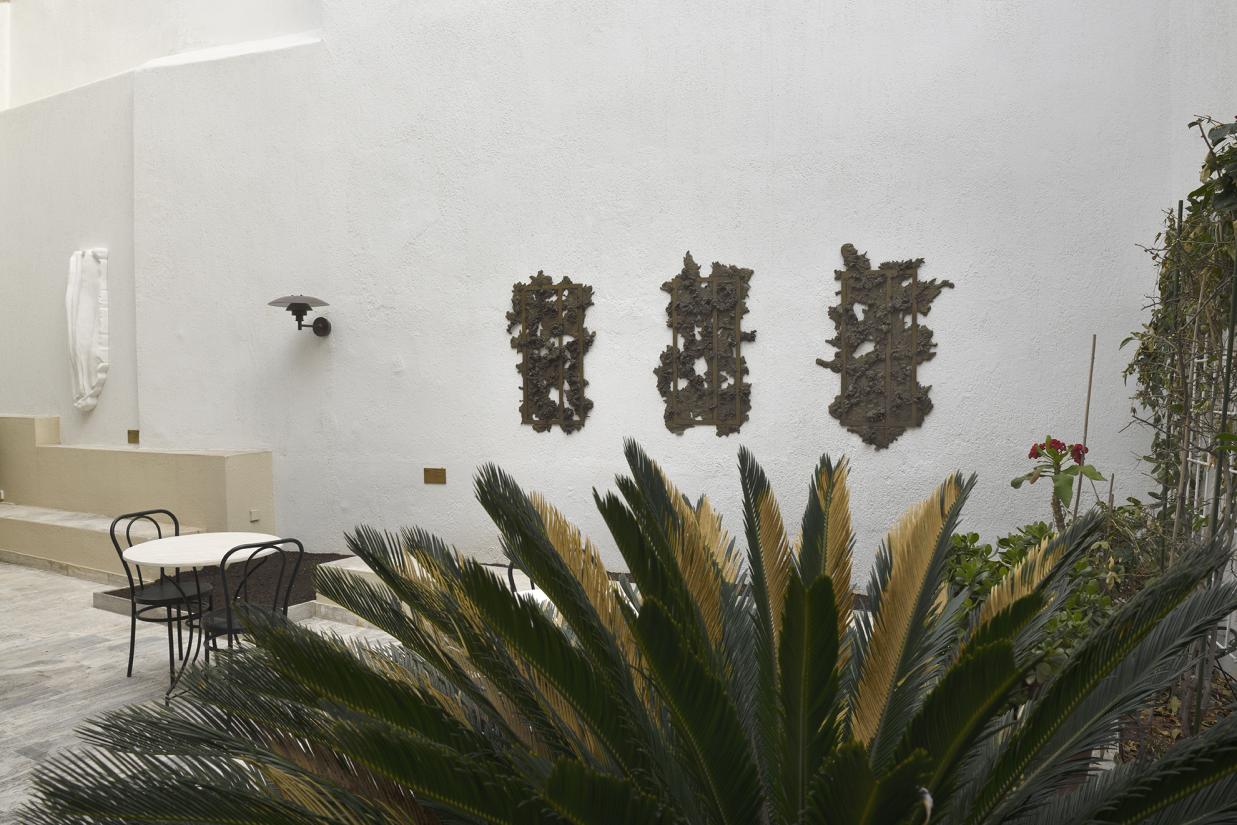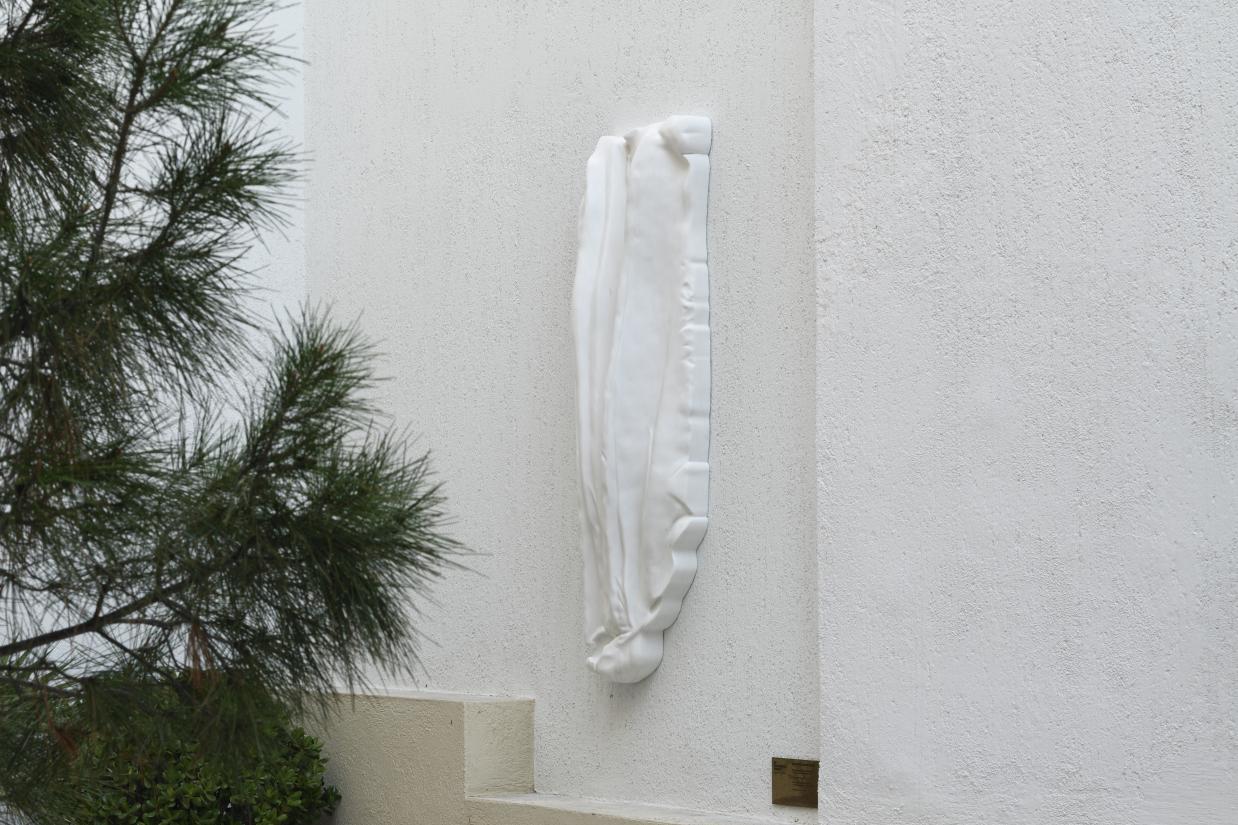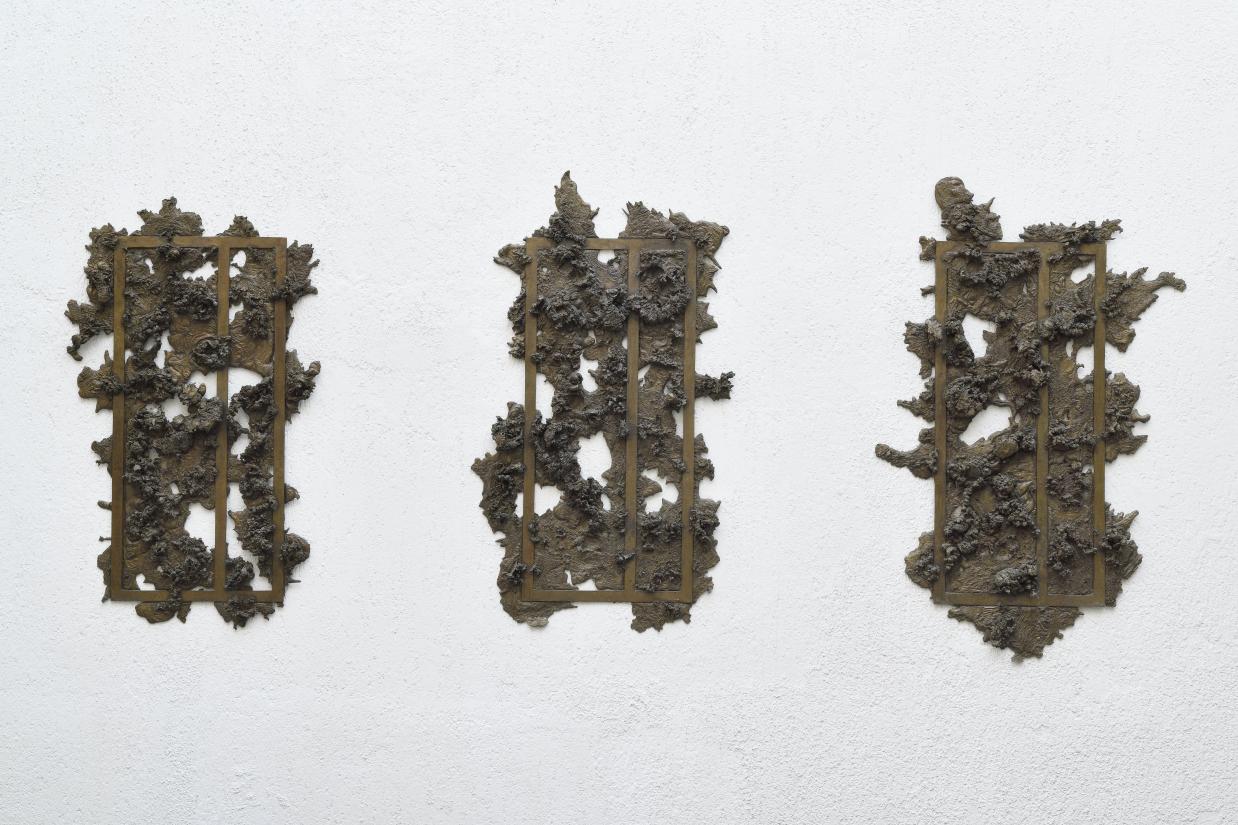With the nature and topography of Greece as her source of inspiration, Friis Jespersen has created three reliefs in bronze and one in white marble. Her suite draws on references to the sculptures and fragmented remains at Acropolis as well as geological processes involving the earth’s moving tectonic plates. Thus, she has addressed both the history and the landscape of the site in an artistic process that is simultaneously random and controlled. The resulting works of art appear as processed sensory impressions, ready to engage the viewer.
‘In my work I aim to reach something I can just glimpse but which is still unknown to me. This happens in an intense dialogue with the materials and with the aspects that I can – and cannot – control. With every new project, this involves exploring the possibilities of motion, change and existence that are present in an open, receptive, intuitive and reflective process. I deliberately welcome the element of chance and unpredictability as an integral part of my process and allow it to influence the resulting form and expression of my works,’ says Veo Friis Jespersen in a comment on her project for the institute in Athens.
Landscapes in motion
Friis Jespersen plays with materiality in an experimental process that begins with letting hot, liquid wax set in ice-cold water. This results, first, in three bronze reliefs that appear as varied landscapes with mountains and valleys. Small bronze eruptions alternately build up and spread. These almost abstract landscape formations seem to be in motion as they hang on the wall in the institute’s courtyard garden but are visually held in place by a rectangular frame in the same material.
In extension of the bronzes, but hung on another wall, is a fourth relief made in white Greek Thassos marble. This relief evokes the same impression of mountains, caves and valleys but has additional layers and folds. It also has a softer expression, a stronger sense of gravity and is interpreted in a different material.
‘With Nu, hvor ingenting er, hvad det var – om forvandling og eksistens, I seek to engage the surroundings in dialogue and invite the viewer into a different space than the familiar one. Here, spatial transformations and possibilities for new experiences and sensations are put into play in the hope that new stories will take shape in the viewer’s encounter with the piece,’ says Veo Friis Jespersen.
The Danish Institute at Athens
The Danish Institute is centrally located in Athens’ Plaka district, east of Acropolis. Founded in 1992, the institute is an independent institution under the auspices of the Danish Ministry of Higher Education and Science. It aims to promote research, education and culture in Greek and Mediterranean archaeology, history, language, literature, visual arts, architecture and cultural traditions.
About Veo Friis Jespersen
Veo Friis Jespersen (b. 1960) graduated from the Royal Danish Academy of Fine Arts in 1994. She experiments with different types of materials in an explorative artistic approach that reflects her strong grasp of materiality. Moving beyond the typical hierarchy of materials, she brings rubber rope, branches, aluminium, wood and found objects into play on equal terms with more traditional materials, such as bronze or marble. She has exhibited at Den Frie Centre of Contemporary Art, the art centres Viborg Kunsthal and Kunsthal Charlottenborg and the New Carlsberg Glyptotek and has also realized a number of public art commissions.





